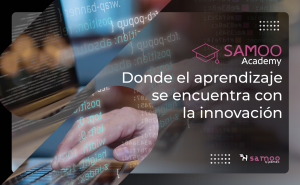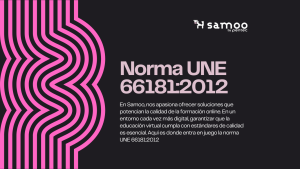
ACCESSIBILITY AS A RESPONSE TO DIVERSITY
Information and Communication Technologies (ICT) have become part of the pedagogical structure and didactic organization of both schools and universities. Today, it is inevitable to associate the exponential growth of digitalization in education with the COVID-19 pandemic, educational technology with progress or technological innovation with prosperity. However, beneath the inevitable pairing of educational technology and advancement lies the inexplicable combination of educational technology and exclusion.
If we are aware of the electronic and digital reality that surrounds us, we will have found ourselves at some time in the situation of not knowing how to interpret the information presented to us. From having low color contrast with the text and not being able to read the information well, to images without alternative text without understanding very well why they are there, links that do not lead us anywhere, text that is too small or even empty buttons. These errors in the design of user interfaces, as well as in the design of e-learning materials, greatly hinder the understanding of the content and are even more aggravated for students with specific learning difficulties.
Traditionally, most educational technology designers have focused on the usability of their solutions, leaving necessary accessibility issues unattended, which has consequently resulted in some learners being unable to decipher the learning content and therefore make good use of it. Did you know that 14% of the European Union population aged 15-64 years has some kind of difficulty in performing basic activities?
To cope with this situation, there are more and more EdTech EdTech solutions solutions are increasingly choosing to include accessibility aspects in their design so that no one is left unattended and everyone can decipher any information presented in digital format. The COVID-19 crisis has caused disruptions in face-to-face education, causing it to evolve towards blended or even online models, which has generated the need for content to be even more inclusive and universal.
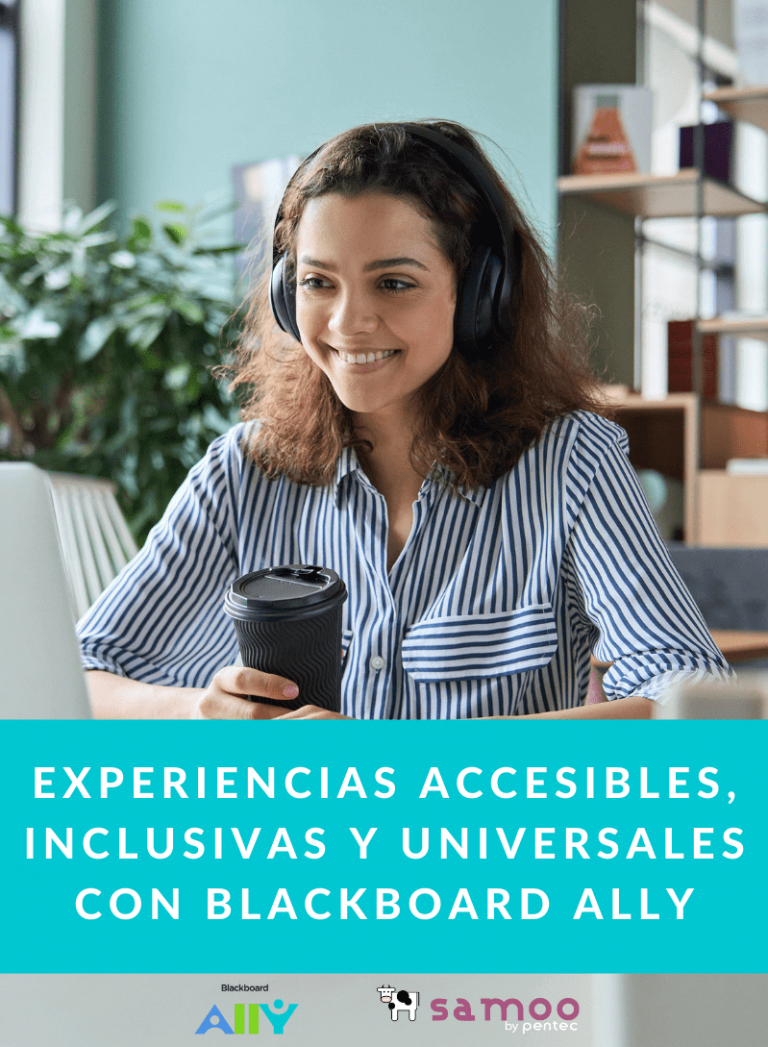
How to deliver accessible, inclusive and universal experiences with Blackboard Ally
The idea of accessibility should not be attributed only to people with disabilities, since the pretext of accessibility is to respond to diversity, offering all students the same educational opportunities, improving the quality of learning experiences and ensuring that everyone has better access to online educational material.
The evolution of educational technology has made it possible for us to have revolutionary solutions focused on making online course content accessible. With the purpose of making teachers' lives easier and easier and helping educational organizations to accelerate the creation of inclusive teaching-learning experiences, the following emerges Blackboard Ally. A unique application that easily combines with any online learning platform to streamline the workflows used by administrators, instructors and students.
This educational solution offers the possibility of changing the format in which the content is presented in just a couple of clicks so that students can decide how to consume the material. Alternative formats include mp3 audio, JavaScript optimized for mobile devices, ePub, electronic braille, as well as translated versions of the educational material that use sophisticated machine learning algorithms to make them available to all students in the course.
Ally is designed to help institutions gain a better understanding of the accessibility of their content by providing guidance to faculty on how to improve the quality of their content and save time and resources. As such, it informs them about the usability of their course material, identifies accessibility issues and guides them in addressing the problems encountered by helping them to make their content more accessible.
Blackboard Ally not only allows you to meet the accessibility criteria for teaching materials, but also contributes to the successful approval of educational projects and accreditation of courses, as it meets the objectives and requirements demanded by the responsible institutions. Ally offers accessibility reports of course contents from the entire institution, making it possible to know and understand in depth the state of the didactic materials and their evolution from the accessibility point of view. Blackboard Ally, as a pioneer in institutional reporting on courseware accessibility, aims to provide a detailed view of all course content across all courses to help the educational organization assess the status of materials and determine the need for additional measures to improve the use and purpose of the materials.
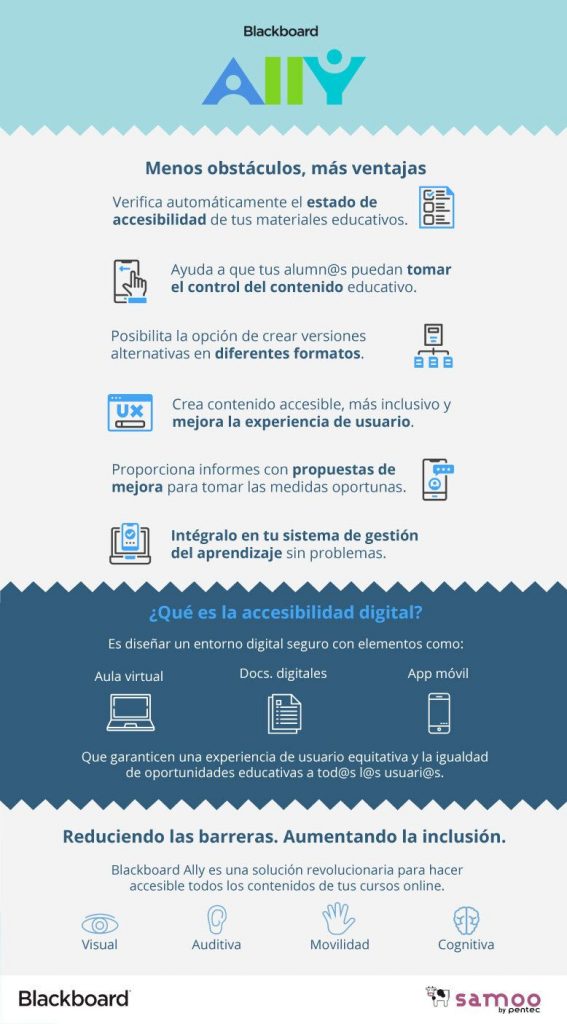
Education, a fundamental right
More and more universities and schools are becoming aware of the accessibility situation in their centers and are betting on educational technology to continue guaranteeing an inclusive and quality education. To this end, Blackboard Ally interacts with learning management systems effortlessly so that both teachers and students can rely on this tool to improve the quality of their content and teaching experiences.
In short, if we are not able to guarantee accessible education for students, their full potential will not be accessible either to teachers or to the rest of the world. Consequently, if we do not contribute to ensuring that all our students have the same opportunities to access the content, we will not be contributing to a principle more than assumed by all, which is to make education universal and accessible to everyone. Do you contribute to the access to content?
Last entries

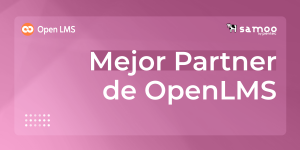
Samoo by Pentec Best OpenLMS Partner 2023
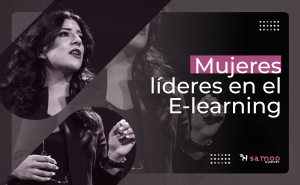
Women in e-learning

Leaders in content virtualization
